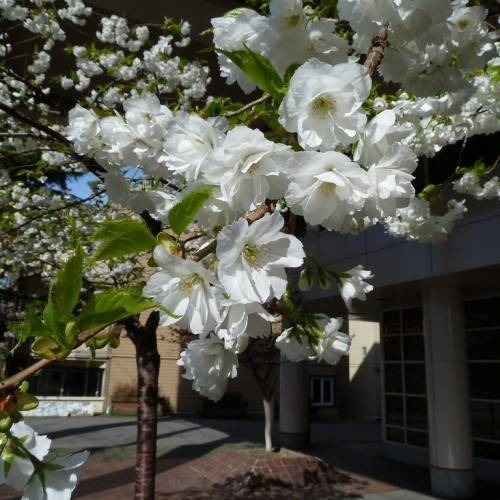
Mount Fuji cherry
Prunus 'Shirotae'
Cycle:
Perennial
Watering:
Average
Hardiness Zone:
5 - 7
Flowers:
Flowers In Spring
Sun:
Full sun
Soil:
Acidic, Humus rich, Well-drained
Fruits:
Fruits Ready In
Leaf:
Yes
Growth Rate:
Moderate
Maintenance:
Low
Drought Tolerant:
Yes
Salt Tolerant:
Yes
Care Level:
Medium
watering
Mount Fuji cherry should be watered frequently during the growing season. Plants should be given 1 inch of water per week, with more during periods of intense heat and drought. If the soil feels dry at a depth of 2 inches, add water. During the cooler months of fall, gradually decrease watering to every 10 days to 2 weeks. During winter, water once every 3 to 4 weeks, depending on the outdoor temperatures.
sunlight
Mount Fuji cherry trees (Prunus 'Shirotae') require at least 6 hours of direct sunlight per day. This plant species prefers full sun, so the more hours it spends in direct sunlight, the better. If you are growing this species in a southern climate where direct sun can be intense, it may be beneficial to provide some partial shade during the hottest part of the day. Ideally, the plant should receive direct sunlight early in the morning and then again in the later afternoon.
pruning
Mount Fuji cherry (Prunus 'Shirotae') should be pruned twice a year. During early spring (late February to late March) and again during late summer (August). Remove any dead, damaged, or diseased branches with pruning shears. Reduce the length of some lateral branches by 1-third their length to maintain the desired shape. Trim away crossing branches, any interfering with the center of the plant, and any which are overhanging any structures. Prune away suckers at the base of the plant, as these will divert energy from the blossoms and fruits. Removal of small twigs with pruning shears can help improve air circulation in the canopy. Finally, thin out the canopy of the tree by selectively removing some lateral branches to allow more light into the center of the plant, which will improve air circulation and stimulate bud growth.
